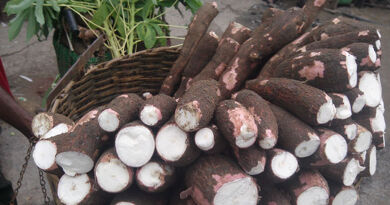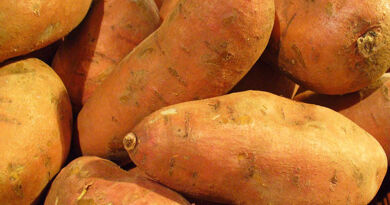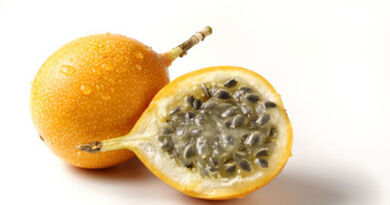Vanilla
Vanillier is a liana, from the Orchidaceae family, whose pods, after a certain preparation, constitute either Vanilla or Vanillon, depending on the species. The aromatic principle is Vanillin, which was also synthetically reconstituted in 1891 from eugenol, extracted from clove essential oil.
Introduction of this Vanilla in our islands
The Aztecs used Vanilla long before the discovery of America. We do not know if the Caribbean did the same. It is however possible that its introduction into our islands was made in Guyana, not before the beginning of the 18th century, in Martinique first, and then in Guadeloupe.
It is to Father Labat that we owe the description of the circumstances of its introduction: “Two of our Religious who passed to Cayenne in 1697, coming to Martinique, were perfectly received by the R.R. Jesuit Fathers who take care of the spirituality of that country; our Fathers saw at the Jesuits a few pots filled with these plants that we had prepared to send to Europe: they testified to want it, and immediately the RR Fathers made them present a pot where he had three feet perfectly taken up … “I immediately put these three plants in the ground at the foot of a cocoa tree, and I took care to make them water until I saw them well enough and strong enough to do without this help. They benefited very well, in less than eight months they covered the whole tree against which I had supported them. ” If things were so simple at the start, they became so complicated that the small Vanilla plantation was jeopardized. Father Labat continued as follows: “The Religious who succeeded me sent new Negroes to weed the cocoa plantation where Vanilla was, without warning them and without making them known; they took it for an ordinary vine, they cut and entirely tore off all the Vanilla … ” But that was without taking into account the tenacity of the Reverend Father, because immediately advised, he ran to the cocoa plantation where he found on a tree, a twig of Vanilla inadvertently left, which could have touched the ground and taken root. Although Father Labat thought to bring a few Vanilla plants by the end of 1699, it was not until November 1,701 that he carried eight feet, some of which dried, the rest yielding beautiful plants. But the culture was hardly fruitful. Father Labat saw neither flower nor fruit, and the adventure ended very quickly, here is how. The English burst into Guadeloupe in March 1703 and took control of the Baillif district. They tore off all the Vanilla and, in all likelihood, took them to England. Thus, the adventure of Father Labat’s Vanilla ended. It only lasted two years.
Artificial pollination
Father Labat’s unsuccessful attempts prove that growing Vanillier is most often possible only by fertilizing the flower artificially. According to some authors, it was in 1836 that Edmond Albius, a former Réunionese slave, succeeded for the first time, in Liege, the artificial pollination that is applied today in all the regions where Vanilla is cultivated. Other authors, on the other hand, believe that it is to Mr. Neuman, Head of Greenhouses at the Museum of Natural History in Paris, that credit is due for having made this discovery, from 1830. The culture of Vanilla, in the West Indies, therefore did not begin until the 19th century.
Vanillier flowers, because of their conformation, do not fertilize themselves and it seems that neither birds nor insects play an effective role in the pollination of cultivated plants. However, Vanilliers abandoned near the large woods produce pods. Research carried out in certain Vanilla producing countries, in Mexico in particular, has shown that the natural pollinating agent of the Vanillier flower is a small bee, the Melipona, which existed in our islands at the beginning of colonization, but which has gone today.
Pollination must be done as soon as the flower blossoms, when the male organs (stamens) and the female organs (stigmas and ovaries) are still fresh. We operate in the following way: after having torn apart, with a piece of bamboo or a large pin, the lip which envelops the stigma, we lift by pushing it back, the stigmatic tongue and we tilt the anther by hugging it on the stigma so as to coat it with viscous pollen. Some time later, the pods appear.
A field crop
Today, the large Vanilla plantations have disappeared; there are only very small family farms, the production of which is intended for local consumption. The Vanillier only uses the tree on which he climbs as a support, he draws no substance from it, hence its name of epiphytic liana. The choice of tutor is precise. Indeed, the Vanillier forms, with it, a kind of symbiosis, it must necessarily include fungi which live in mycorrhizal association with the adventitious roots of the liana. The tutors, generally employed in our islands, are: Sweet Pea and Roucou.
Vanilla cultivated in our islands
Different species have been cultivated in Martinique: the species native to tropical South America, Vanilla pianifolia G.J., called “Vanille” or “Bonne Vanille”, which Father Labat introduced into our islands. There is also Vanilla pompona Schiede, called “Vanillon” in Martinique, originally from Central America. This Vanilla is distinguished from the first by its thinner and wider leaves, by its larger and shorter fruits. Note the presence of an indigenous Vanilla tree: Vanilla mexicana Mill. called “Wild Vanilla” or “Brown Vanilla” in our islands. Its fruit has no fragrance. We do not know if it was used by the Arawaks and the Caribbean.
How do you prepare Vanilla pods for consumption
Here is the recipe that Father Labat knew of a Jew passing through Martinique: “He told me that the Indians picked it as soon as it started to turn yellow, that after boiling it for a few moments in brandy, they dried it in the shade; that being half dry they flattened it between their fingers along its entire length, and that finally, after having rubbed it with a little Palma Christi or Coco oil, they wrapped it in leaves of Balisier where she finished drying; and that on all things, they were careful never to leave it in the sun. ” “I observed exactly what this Jew had told me; I made various tests, and always needlessly from where I concluded that the Vanilla which grew in Martinique was of another species than that of Cayenne and the new Spain, and that thus it would be necessary to wait until that which I cultivated brings back fruit, or that I could discover by some other way the way to prepare the one we have in Martinique. ” This confirms the presence of a native species on this island.
Here is another recipe, the opposite of the first. Father Labat continued thus “However I have since known, being in Cadis at the end of 1705, that the whole ceremony that the Indians do to accommodate their vanilla was to pick it as soon as they realized that it wanted to turn yellow, and to open , that they put it to ripen and ferment like I said that we put the cocoa, for two or three days, and then they put it to dry in the sun. When it was half dry, they flattened it between their fingers, and after having rubbed it with Palma Christi oil, or Coco, or Calba, they still exposed it to the sun to finish making it dry, after which they rubbed it with oil a second time, and put it in bundles which they covered with Balisier or Cachibou leaves. This method is very different from that of the Jew; but as I have not had the convenience of testing it since I know it, I cannot assure that it is the real one. However, I have reason to believe it, because I learned it from people worthy of faith, and who seemed to me very well educated. It is natural to think that the Jew was ignorant or misleading, and perhaps both together, this is not very extraordinary in these kinds of people. “
As we can see, Father Labat was not always tender for everyone, he sometimes had preconceived ideas.
Its preparation nowadays It is certainly not as complicated as the first two. Well-informed manufacturers have told us that the preparation of Vanilla remains a very simple operation. It is enough to pick the mature pods, using a pin, to “bleed” them, that is to say to make small lines in order to let out the juice. Then we wrap them in flannel fabric; to avoid mold, put them in the sun from time to time. After a few days, the aroma of Vanilla is felt.




